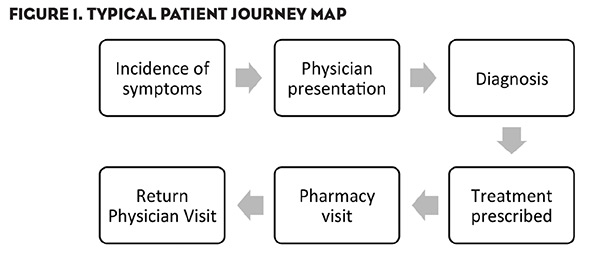Whether you supported it or opposed it, as 2013 unfolds “Obama Care”/ “The Affordable Care Act” will gain momentum as it is fully implemented. The implementation of the law will undoubtedly have significant consequences for the pharmaceutical industry and its associated service providers across the board. But how will it influence the unique challenges marketers face at the brand level? Are there hidden consequences that we should be aware of?
In the pharmaceutical industry it is customary to shorten titles so that the new healthcare law is widely referred to as the Affordable Care Act not using its actual full title, i.e., the Patient Protection and Affordable Care Act (PPACA). The shortening of this law’s title may limit the perspective of the act and create a distorted view of the effects on the market landscape. Lawmakers named the law the Patient Protection and Affordable Care Act because their primary consideration was the patient: not providers, not payers and not pharma.
PPACA is not simply a cost curbing law that inserts new regulations into the insurance industry attempting to mitigate the exploding costs of healthcare; it is a directed effort to shift how healthcare delivery is performed in the U.S. The different patient-facing aspects of the law will be rolled out over the next few years and will have major long-term effects on the delivery of healthcare, which in turn will change where and how pharma marketers can implement marketing tactics for branded products.
Although we have yet to witness the full impact that PPACA will have on the pharma industry, these changes in no way mark the end of the industry; rather, they represent a push to a new normal. Much like other regulatory attempts to mitigate rising costs, PPACA will change the way the pharmaceutical industry conducts business going forward. These changes are already taking place on the R&D side of the business as many companies are moving to form alliances and consortiums to develop new products. As PPACA is fully implemented over the next several years, the commercial side of the pharmaceutical industry will also begin to change the way it does business.
This series of articles will purposefully avoid discussion of the effects of the electronic health records (EHRs) or e-prescribing incentive programs. Instead, it concentrates on identifying a growing problem in the patient journey, which will affect how successfully pharma marketers can promote products. To best illustrate the issues, the series will: Introduce the concept of process mapping to highlight the challenges; review the resilience of the pharmaceutical industry to adjust to changes in the patient journey process; look at how some PPACA initiatives affect the process; and conclude with some areas of opportunity where pharma marketers may be able to overcome the impending PPACA challenges.
The “Patient Journey”
Since PPACA is designed to change how healthcare is delivered to the patient, a holistic understanding of these changes requires a broader perspective of the program’s goals. One approach to understand the impact of the changes on pharmaceutical marketing is to use a process map of how healthcare is currently delivered. For the purposes of this article we will use the model that Dr. Simone Seiter and her IMS colleagues refer to as the “Patient Journey” (see Figure 1).
A patient journey map is an outline of the process in which the patient initiates contact with the system and is delivered healthcare. Dr. Seiter says, “it’s really important to understand how the patient actually travels through the system, meaning from the first incidence of symptoms down to the diagnosis and treatment, as well as compliance and adherence to treatment.”1 Properly constructed patient journey maps can help identify areas of marketing opportunity by enabling the system.
Figure 1 illustrates a very simplified process map of a typical patient journey process, which will be used as a baseline, before PPACA. Some areas of the patient journey may be elucidated in more detail which could include sub-processes and variations due to particular disease states. Some process maps may also include tributary issues and/or decision points which determine the direction of the patient journey and drive the individual process map to look more like an algorithm. Over the last few decades, the growth of specialization, the increase of payer intervention and the explosion of information access has increased the steps and complexity of today’s patient journeys.
It is not difficult to imagine that the framers of PPACA used process mapping to identify whether improvements could be made to existing systems. The importance of process mapping for marketers is that it can help identify areas where bottlenecks, delays or gaps occur. Such areas can lead to a better understanding of where optimal tactical implementation can occur to affect the final “throughput” or the quantity of compliant patients.
Identifying areas where the process is strained can also allow marketers to enable the process or minimize drag on the process in order to increase the final output of prescriptions dispensed and adhered to. Using the patient journey process provides a better understanding of how PPACA implementation will result in direct changes to healthcare delivery to the patient. A clear understanding of the journey can inform marketers on how best to adjust tactically in order to best communicate brand messages and increase prescription throughput.
Fearless Pharma
Although branded pharmaceuticals have dropped to less than 30% of the total U.S. market volume, history teaches us that brand pharmaceutical marketing is resilient and will find ways to overcome new hurdles. Some have said that commercial pharma personnel should enjoy the current times as they are “golden days” of pharmaceutical marketing and sales. However, a look back on the last 25 years shows that there were many “golden days.” Weren’t they golden days when each pharmaceutical sales representative was a trusted friend to the provider and the patient journey sometimes was completed with a house call? Or weren’t they golden days when the “blockbuster” drug model drove the industry to record sales and profits?
Even those “golden days” were met with challenges that increased the complexity of the patient journey. Yet, faced with the new challenges, the commercial side of pharma was able to overcome them. As constraints on providers’ time came into play and the industry grew more competitive, the trusted “relationship selling” model was forced to migrate to the elevator pitch. Again in 1993, when the defeat of “Hillarycare” did not stop or slow the changes in the healthcare system, pharma adjusted to the new reality and found success within managed care and the formulary. The key to success in times of change is not to panic but rather to adjust by understanding where the opportunities exist and identifying tools to capitalize on the opportunities.
Look for Part Two in the July issue.
References
1. Seiter S, Effective pharma marketing starts with a patient journey, PharmaPhorum, 7 Nov 2012; Articles/Interviews







